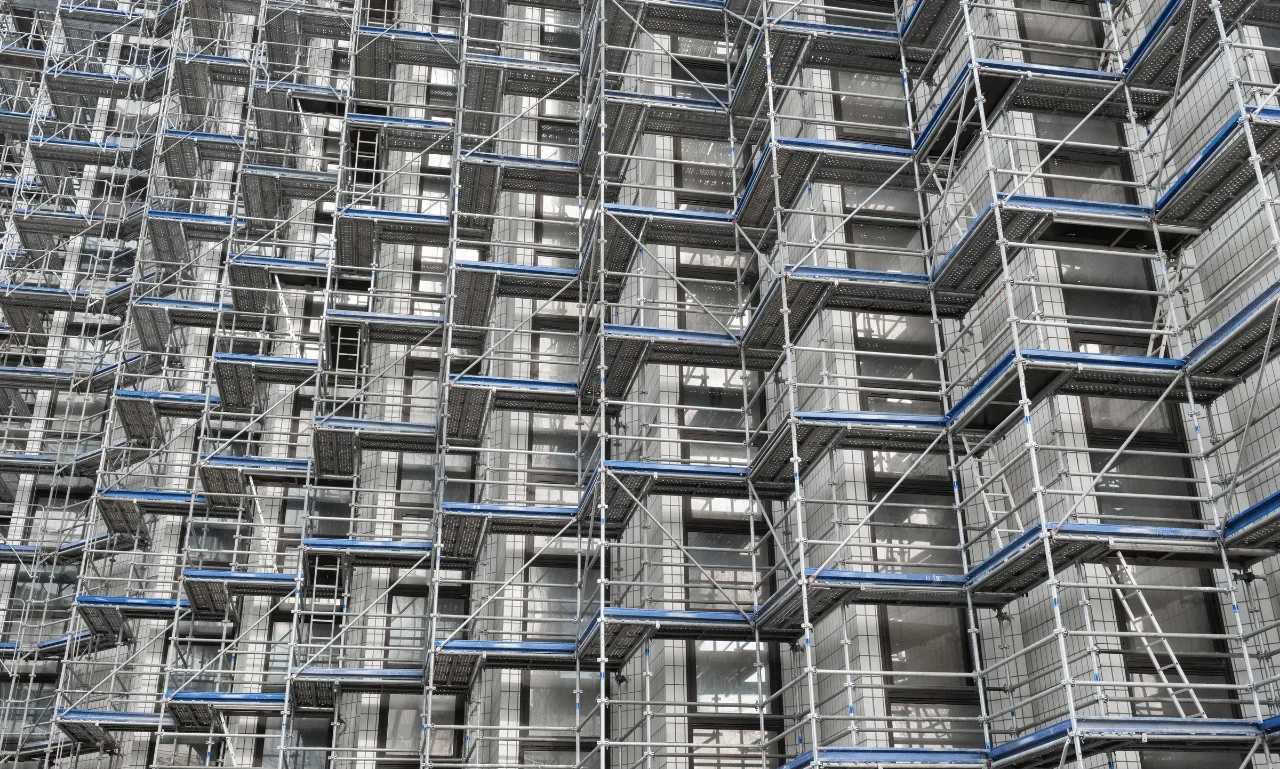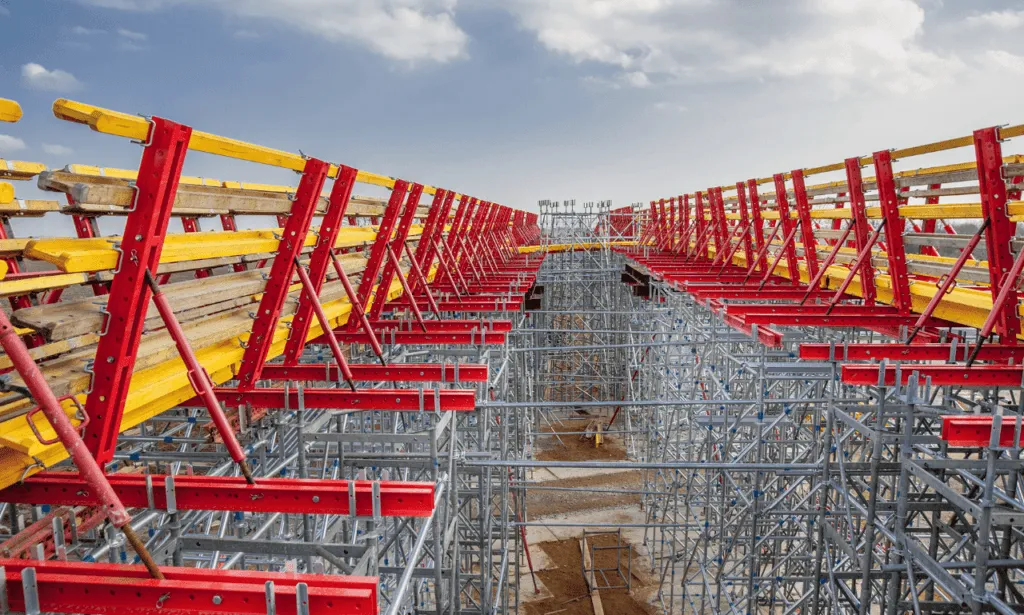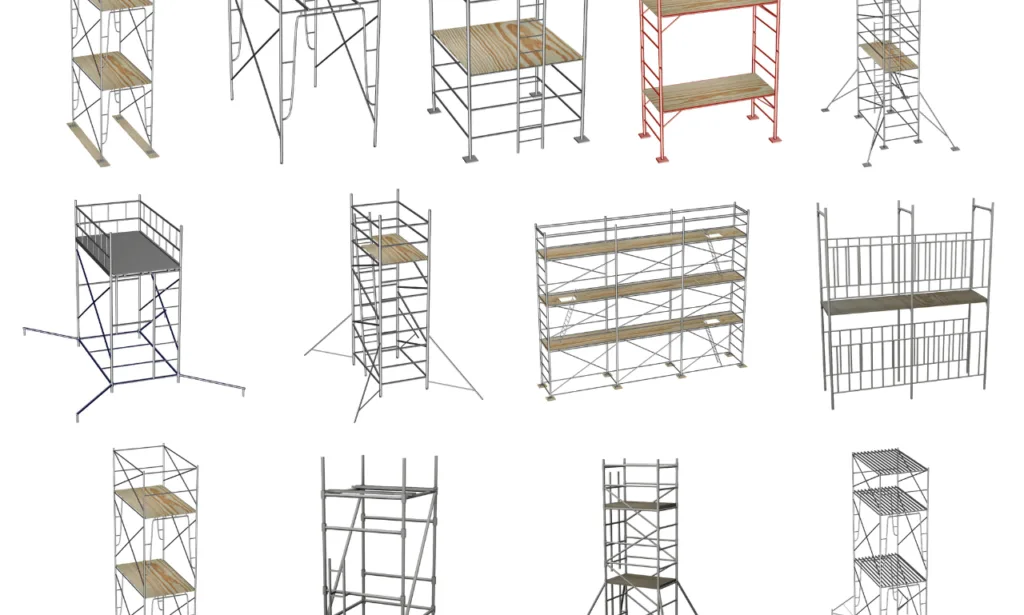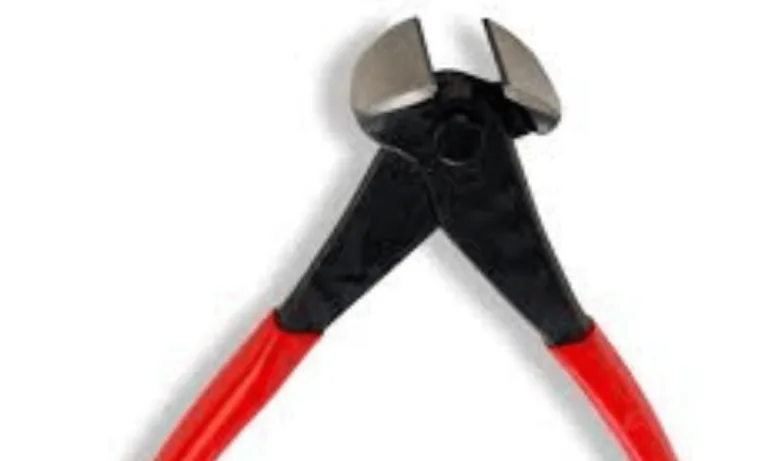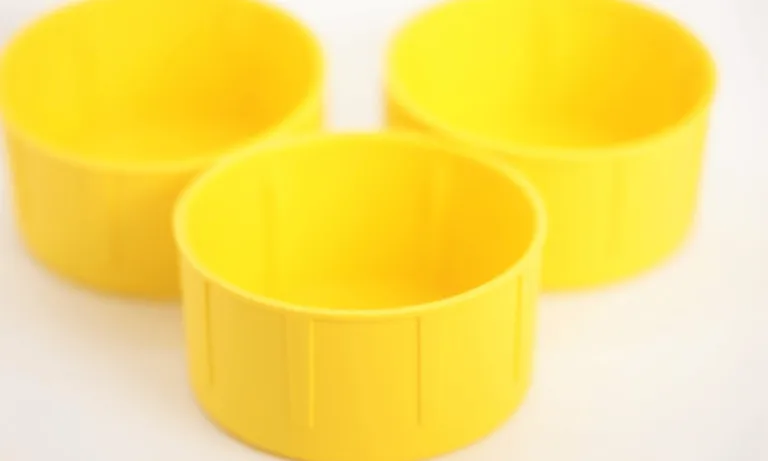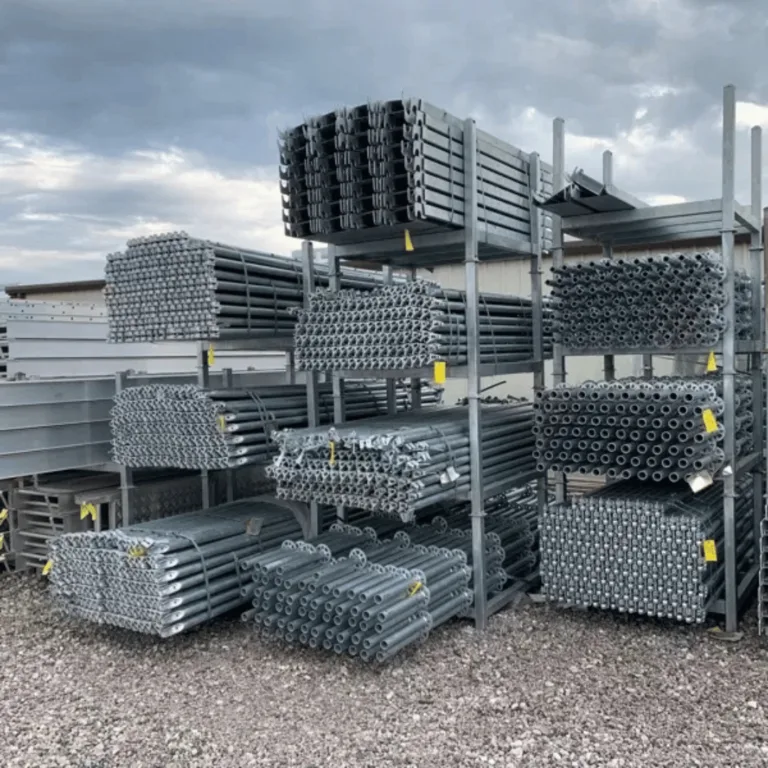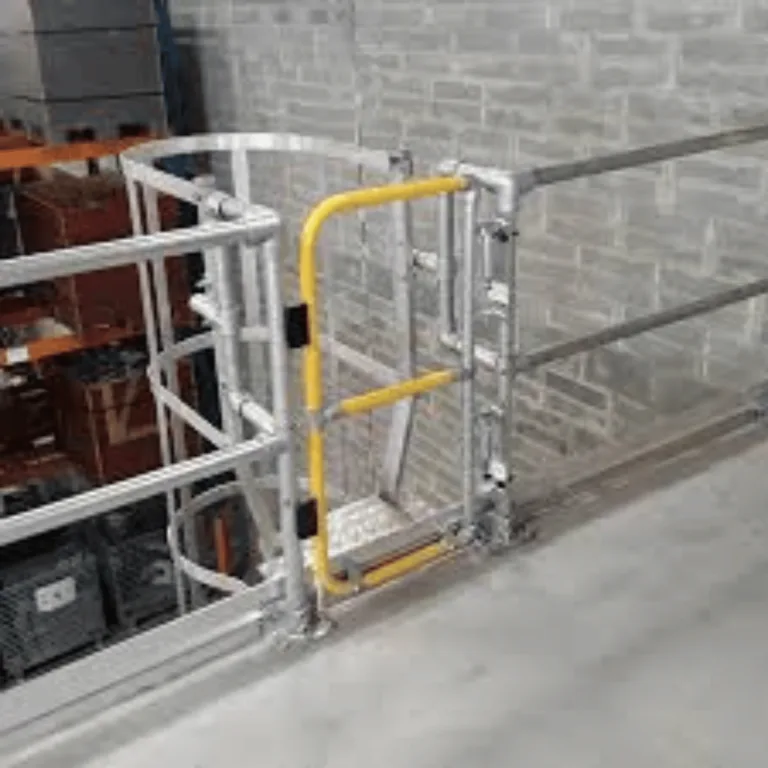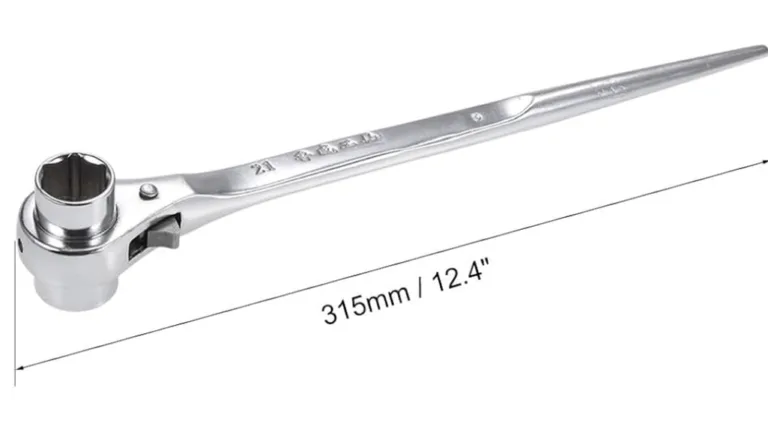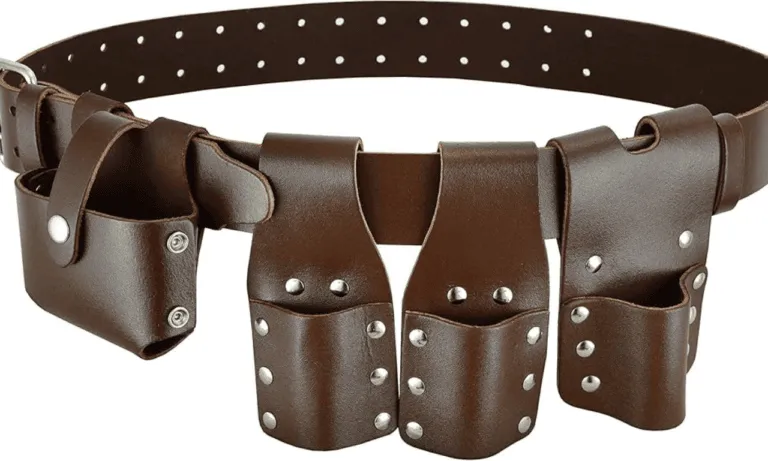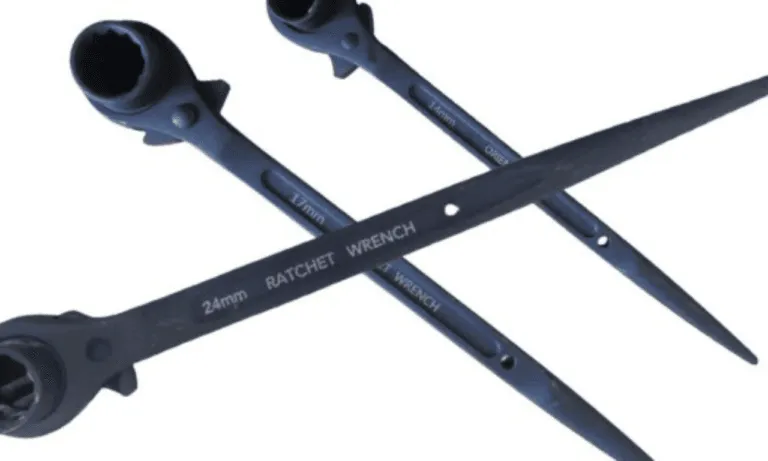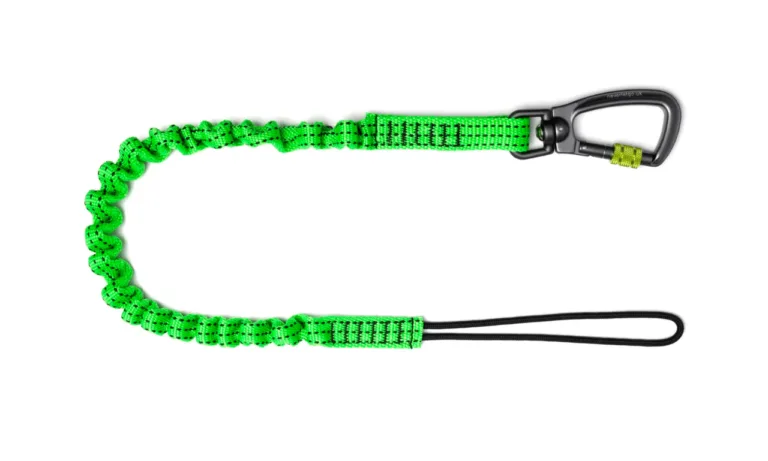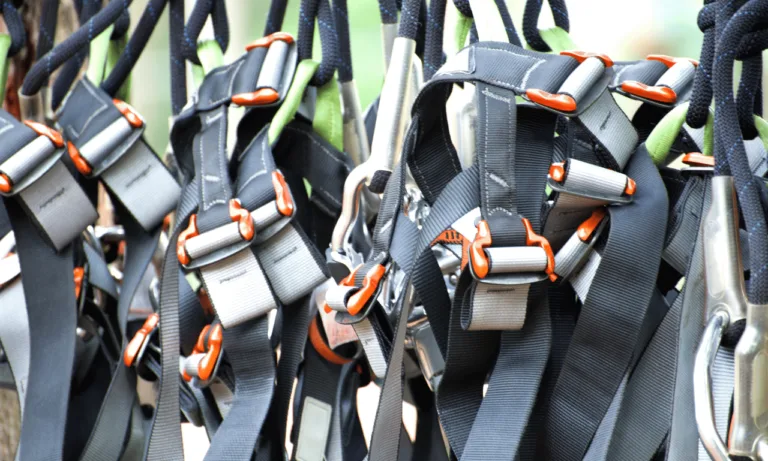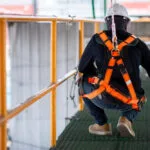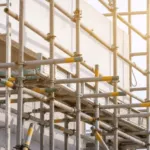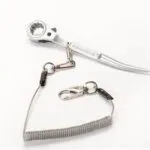Phone:
(+65)8319-0742
The success of any construction project depends on the stability and safety of the scaffolding. Reveal tie scaffold solutions are gaining attention for their role in securing scaffolding structures. They use adjustable systems that fit into structure openings, securing the scaffold with reveal ties.
These ties work by friction, but they can hold more than just the scaffold’s weight. It’s important to use them wisely to ensure safety and efficiency. No more than half of the scaffold’s ties should be reveal ties for a stable setup.
Scaffolding solutions need tie systems for stability. Understanding the role of these ties is crucial. Reveal ties are just one method used to keep scaffolds stable, especially in windy or high places.
Key Takeaways
- Reveal tie scaffold systems are crucial for scaffold stability and safety in construction projects.
- Adjustable scaffolding with reveal ties utilize structural openings for secure anchoring.
- Using high-quality materials and following regulations ensures enhanced safety and compliance.
- Regular maintenance and inspections are imperative for the continued effectiveness of scaffolding ties.
- Understanding the application and limitations of reveal ties is key to a balanced scaffold structure.
- Advancements in scaffolding technology continue to improve safety and efficiency of tie systems.
The Necessity of Tying in Scaffolds for Construction Stability
Robust scaffold tying is key to keeping construction sites safe and stable. Knowing and following scaffold tie rules boosts the scaffolding’s strength. It also lowers the risks of accidents on the job.
Scaffold Safety Practices: Keeping construction scaffolds secure and strong is a must. Each scaffold must follow strict safety rules. This includes choosing the right ties, which are crucial for holding the scaffolding steady under different loads.
Effective scaffold ties should provide stable support to the scaffolding standards, which bear the cumulative weight of the structure along with any additional loads.
Scaffold Tying Techniques: It’s important to use the right methods for tying scaffolds. For example, Through Ties are great for buildings being built. They can hold a lot of weight and are easy to check.
Box Ties, made of galvanized steel, wrap around columns or pillars. They are versatile but might need more ties for extra stability.
- Anchor Ties: These ties are bolted to existing structures. They’re perfect when you can’t drill, offering high security.
- Hybrid Ties: These ties are made for specific needs. They might cost more and be more complex, but they meet unique demands.
It’s important to make sure scaffold ties fit the scaffold’s needs. Structural Compatibility means choosing the right materials and methods. This depends on the building and the environment, like wind or vibrations.
Sole boards and base plates must also be the right size and strength. This ensures the scaffold’s load is evenly distributed and safe. For example, the base plate’s thickness and size are key to handling the scaffold’s forces.
Following safety rules and planning carefully are key to a safe construction site. Teams need to know and use modern tying techniques. This way, every scaffold can safely hold workers and materials.
Assessing the Importance of Scaffold Ties in Construction Safety
Keeping construction sites safe is a top priority. Scaffold ties are key in making scaffolding systems safer. They help keep workers safe when they’re working high up.
Almost 65 percent of construction workers use scaffolds often. This makes scaffold tie systems crucial for safety and work efficiency. Factors like weather, load, and tie strength are important for keeping scaffolds stable.
How Scaffold Ties Enhance Structural Integrity
Scaffold ties hold scaffolds to buildings, keeping them steady. They’re especially important for tall scaffolds. High winds can push on scaffolds, but ties help hold them firm.
Checking tie connections and following safety rules are key. Teaching workers about scaffold ties helps prevent accidents.
The Role of Scaffold Ties in High-Risk Environments
In risky places, like high or windy areas, scaffold ties must be top-notch. They need to handle strong winds and shakes without breaking.
- Scaffold safety tips include checking ties carefully.
- Training workers on new safety rules is important.
- Following safety standards for ties is essential.
Using scaffold ties right helps keep structures strong and workers safe. Good scaffold safety programs teach both theory and practice.
Using and keeping scaffold ties in good shape is vital for scaffold safety. Following safety rules and improving tie technology can make construction safer. This protects workers better.
Exploring Common Scaffold Tie Methods: Reveal Ties and Beyond
Knowing how to use different scaffold tie types is key for safety and stability. It’s important for construction workers to understand through ties, reveal ties, box ties, and lip ties. This knowledge is crucial for scaffold tie installation.
Understanding Through Ties and Their Application
Through ties are used when scaffolding needs to go through openings like windows or doors. They help support the scaffold and connect it through the building. This makes the structure stronger. Workers must be precise and follow safety rules when using through ties.
Comparing Reveal Tie Scaffold Methods to Traditional Ties
Reveal tie solutions use the sides of openings to secure scaffolding. They don’t go through openings like through ties do. Instead, they fit tightly against the building to hold the scaffold in place. This method shows how scaffold tie types can be innovative and different from traditional methods.
- Security and Stability: Reveal ties are great because they don’t damage the building and are very stable.
- Installation Specifics: Making sure reveal ties fit well is important for safety and following rules.
Safety is always the top concern in scaffolding, with rules from the Health & Safety at Work Act and Work at Height Regulations. Each scaffold tie installation method must follow these strict rules. Using the right tie types and methods makes scaffolds stronger and safer, meeting legal standards.
In conclusion, choosing between reveal ties and other methods depends on the project and site. The most important thing is to use these methods carefully and follow safety rules. This makes construction sites efficient and safe.
Implementing Reveal Tie Scaffold Systems
Reveal tie scaffold systems make construction scaffold systems better, especially for historic or unique buildings. The way you install a reveal tie scaffold affects the safety and stability of the scaffolding.
Setting up a reveal tie system means more than just putting it together. It’s about making it fit the construction needs. Adjustable reveal tie scaffold systems let you make precise changes. This is key for following safety rules, like TG20, and protecting the building’s history.
- Most scaffolding for old buildings uses tube and fitting systems. These systems usually meet site-specific wind loads without needing a custom design.
- Reveal ties should make up to 50% of the scaffold ties on a façade. This balance is crucial for stability and structural integrity.
- If scaffolds don’t meet TG20 standards, a detailed site analysis and custom design are needed. This shows how reveal tie scaffolds are versatile.
- Unique site challenges like narrow spaces or sensitive archaeological sites need careful planning. Adjustable reveal tie systems help with this.
Regular checks and proper maintenance are key when using reveal tie scaffold systems. These systems rely on friction, so they need close monitoring. With proper management, construction projects can be safer and more efficient.
Calculating the Right Scaffold Tie Spacing for Maximum Safety
To keep workers safe and work efficiently, knowing the right scaffold tie spacing is key. This step boosts safety and follows best scaffolding practices. Making smart tie spacing choices is vital to avoid stability risks.
Factors Influencing Scaffold Tie Spacing Decisions
Several things affect how far apart scaffold ties should be. The height of the scaffold is a big factor, as taller ones face stronger winds. Wind speed and direction also play a part, as they affect the load on the scaffold.
The type of materials used on the scaffold, like debris netting, adds weight. This means ties need to be closer together for a stable and efficient scaffold tying.
Guidelines for Scaffold Tie Spacing in Various Conditions
- The scaffold tie safety guidelines suggest ties no more than 26 feet apart. But, this can change based on the environment and the height of the scaffold.
- For areas with strong winds, ties should be closer together. Using stronger tie-in methods helps resist wind forces.
- In crowded areas, using nearby buildings to block wind can allow for wider tie spacing. But, this should be done carefully.
Following these guidelines and thinking about the site’s specific conditions helps keep the scaffold stable. This makes the work area safer for everyone.
Analyzing the Strength and Security of Different Scaffold Tie Types
Building or fixing tall structures needs the right scaffold ties for safety and stability. There are many types of scaffold ties for different jobs and safety rules. Knowing how each tie works is key for builders.
Assessing Reveal Tie Scaffold Efficacy
Reveal tie scaffolds fit snugly into building gaps, giving great support. Their success comes from fitting different gaps well and staying tight. But, it’s crucial to follow scaffold tie installation guidelines carefully. This ensures each tie is set right to handle the weight.
Advantages and Disadvantages of Various Scaffold Tie Systems
Construction sites use different ties like through ties and box ties. Each has its own benefits:
- Through ties offer strong support across openings, great for buildings with holes.
- Box ties wrap around strong parts of the building, giving extra stability.
Choosing the best scaffold ties depends on the scaffold’s height, how exposed it is, and the surface it’s on. The wrong choice or setup can weaken the structure or cause failures. This shows how vital scaffold tying equipment and skills are. The connections, or scaffold connections, are crucial for safety and how well the scaffold works.
In the end, each tie system should match its environment and load to improve the scaffold’s performance and safety for workers.
Best Practices for Installing Adjustable Reveal Tie Scaffold Systems
Using adjustable scaffold ties in construction is key for safety and strength. Knowing how to install them and following scaffold tying standards is crucial. It helps protect the millions working at heights in construction.
Starting with best practices for scaffold tying means adjusting ties carefully. They must fit well with different wall types and surfaces. This requires precision and attention to detail to ensure they are stable and secure.
- First, check the area where the scaffold will sit. This helps adjust the reveal tie system right, avoiding too much weight or imbalance.
- Next, make sure the tie tubes are securely attached to the structure. Double-check each connection to handle the stresses of construction.
- Also, use timber packing to improve the scaffold’s grip on the wall. This makes it more stable and spreads the load evenly, reducing failure risks.
It’s important to keep the ties balanced. Don’t use more than half reveal ties, as advised by safety and experience. This keeps the load even and makes the scaffold more stable.
In summary, installing adjustable scaffold ties must follow strict standards for safety and effectiveness. Proper training and following these standards can greatly lower accidents and deaths on construction sites. It’s vital for construction companies to invest in training and make these practices a habit for their workers.
- Make sure all scaffold parts come from trusted suppliers for quality and to meet scaffold tying standards.
- Do regular checks and maintenance on scaffold structures to catch any safety problems early.
Regulatory Compliance and Scaffold Tying Techniques
Following scaffold safety regulations is key to keeping construction sites safe and running smoothly. Knowing and following scaffolding regulations helps keep workers safe and makes sure scaffolds are strong.
Adhering to Scaffolding Regulations for Tie Systems
Starting with knowing local and federal rules, like OSHA’s, is important. Projects must follow OSHA scaffold tie regulations for safety. These rules cover things like how high and far apart scaffold ties can be.
- The first vertical tie must be installed at a maximum height of four times the narrowest base dimension of the scaffold.
- Horizontal distances between ties should not exceed 30 feet, as specified by OSHA.
Incorporating OSHA Scaffold Tie Regulations into Project Planning
Good construction scaffolding practices mean planning with regulations in mind. This makes following rules easier and helps the project go faster. Knowing what loads scaffolds can handle helps plan what materials and people to use.
- Ensure that all scaffold components meet the specific OSHA load-bearing requirements, like light-duty scaffolding supporting up to 25 lbs./sq. ft.
- Training for workers must cover safe work practices, understanding of maximum load capacities, and emergency procedures.
Following scaffold safety regulations also means regular checks and upkeep. Using green, yellow, and red tags can show the safety status of scaffolds to everyone.
According to OSHA, regular and thorough training significantly reduces the risk of scaffolding-related incidents, underscoring the importance of compliance.
Putting these safety steps and rules into projects makes sure workers are safe. It also makes construction work more efficient and reliable.
Maintenance and Inspection Guidelines for Scaffold Ties
The safety of scaffold structures depends on scaffold maintenance and careful inspections. Keeping scaffolding safe and lasting requires constant watchfulness and thorough checks.
Ensuring Durable Scaffolding Equipment through Regular Maintenance
Keeping scaffolding systems in good shape is key. Durable scaffolding equipment is crucial for safety and function. Important maintenance steps include:
- Cleaning all parts to avoid damage
- Looking for rust, corrosion, or wear
- Checking that ties and secure scaffold tying mechanisms are tight and sound
- Replacing any damaged parts right away
Experts should do regular checks to make sure everything is up to standard.
Key Elements of a Scaffold Inspection Checklist
A detailed scaffold inspection checklist helps prevent accidents. It should cover important safety checks:
- Checking if scaffolds are built right
- Looking for loose parts, like ties and braces
- Checking if the scaffold can handle the weight
- Examining poles, platforms, and planks for stability
- Keeping up with the latest safety rules
Inspections should be done by certified pros before use and regularly after. This includes after any changes or bad weather.
Good scaffold care and checks are key to safety and longer life for scaffolding. These steps are essential for safer construction sites.
Following these guidelines and using a detailed checklist can greatly improve safety. It reduces risks and keeps workers safe and efficient.
Conclusion
The importance of efficient scaffold tying in modern construction is huge. Adjustable reveal tie scaffold systems show how technology has improved safety. They make sure scaffolds are safe and fit different building types.
Scaffold ties are key to keeping structures safe and strong. They also play a big role in following rules and installing scaffolds right. This shows how vital they are in the construction world.
High-quality scaffold products are crucial for scaffolds to last long and work well. Using scaffold ties correctly is very important for site safety. Without them, accidents can happen, as we’ve seen before.
New technologies, like self-monitoring scaffold ties, could make construction safer and more efficient. This is exciting for the future of building.
As scaffold safety systems keep getting better, one thing is clear. Keeping safety standards high and using new scaffold solutions is key for the construction industry. It needs expertise, precision, and strict safety rules. All these are supported by good scaffold tying methods.

